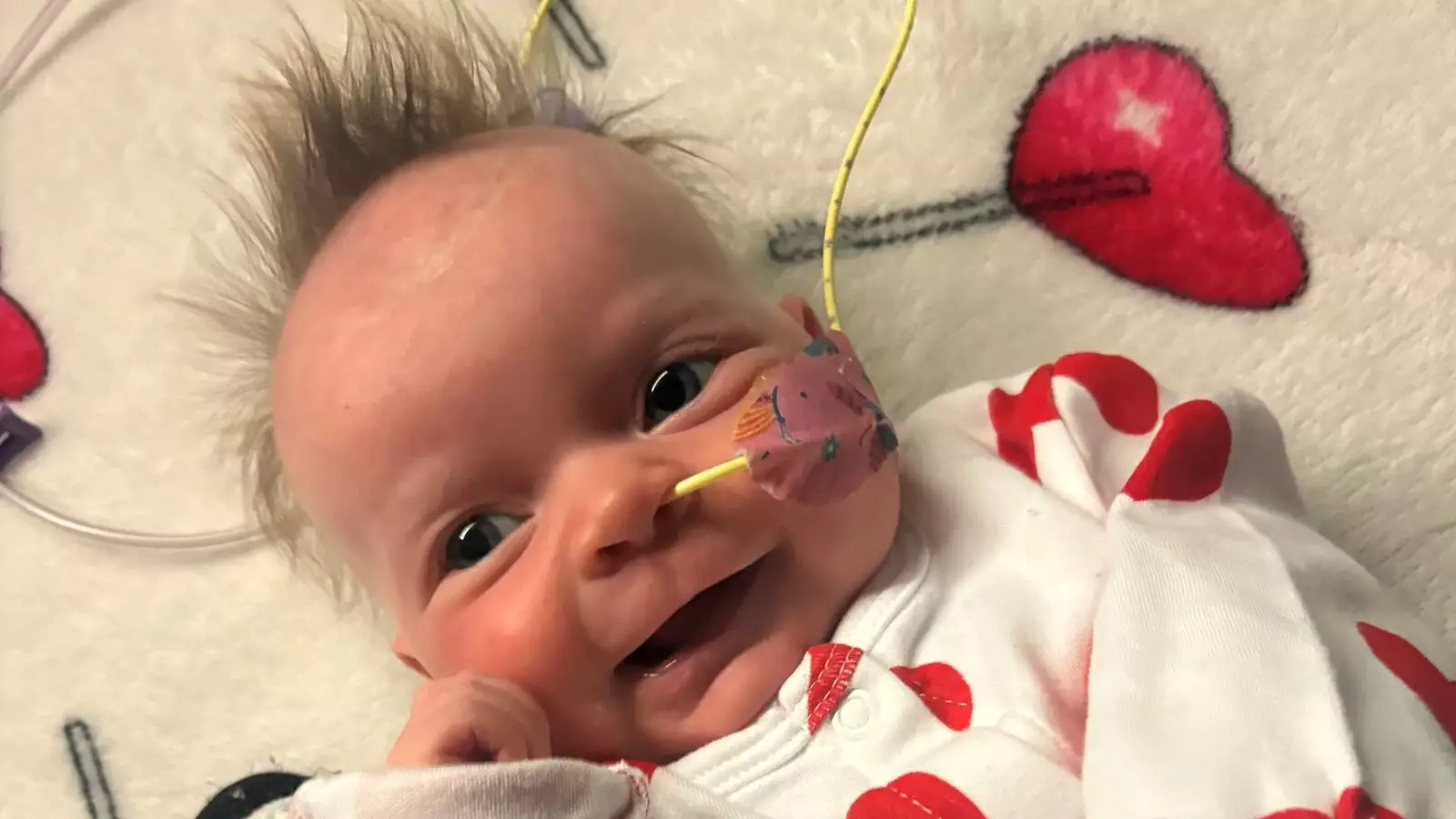Hemophagocytic lymphohistiocytosis (HLH) is an extremely rare but devastating blood disorder that can lead to severe complications and even death if not diagnosed and treated promptly. It occurs when the body’s immune system goes into overdrive, resulting in a severe attack on its own tissues. For many families, the diagnosis of HLH can be a terrifying ordeal, shrouded in uncertainty and sadness. This condition can either be inherited or can arise due to external factors such as infections, with the potential for pediatric cases particularly alarming when each moment is critical for their survival.
Recently, the story of a young girl, Dolcie-Mae Edwards-Raymond, brought the challenges of HLH to the fore. At only three months old, Dolcie-Mae’s symptoms—failure to thrive and signs reminiscent of a viral infection—initially concealed the true nature of her illness. It was only after relentless testing that her parents, Courtney-Jade Edwards and Ashley David Raymond, learned that their daughter was battling HLH.
The emotional impact of such a diagnosis can be profound and life-altering for families. For Courtney-Jade and Ashley, the moment they were informed of Dolcie-Mae’s condition was akin to having their world collapse around them. The awareness that their baby’s immune system was malfunctioning and attacking her own body brought unthinkable heartache. No parent ever prepares for the reality of watching their child endure such a perilous medical condition.
Courtney-Jade expressed the prevalent feelings of anxiety and helplessness that accompany such a harrowing experience: the inability to take action beyond offering love and prayers. Feeling powerless in a situation that demands immediate resolve not only affects the mental well-being of parents but also strains familial bonds and friendships. The advocacy for stem cell donations in light of Dolcie-Mae’s condition underscores a critical need for community support amid individual crises.
In response to their daughter’s diagnosis, the Edwards-Raymond family has taken a proactive stance, calling out to the public to join the Anthony Nolan stem cell register. Their appeal seeks to recruit individuals aged between 16 and 30, who could potentially provide a life-saving stem cell transplant for Dolcie-Mae. Such transplants can serve as the last hope for individuals suffering from HLH and similar conditions.
Charlotte Cunliffe, the director of register development at Anthony Nolan, emphasizes the pivotal role of donors in combatting blood disorders and cancers. The charity aims to connect patients with compatible donors but requires a continual influx of new registrants to fulfill this objective. The interconnected nature of the donor-recipient relationship is one filled with potential hope—where a stranger’s selflessness could transform a life in need.
The situation of Dolcie-Mae is more than a family’s struggle; it is a national call to action. As HLH remains a relatively obscure condition, many people are uninformed about its severity, urgency, and the dependency of afflicted families on available resources. The advocacy work performed by the Edwards-Raymond family not only highlights this particular case but seeks to build a broader awareness around HLH and the necessity of stem cell registries.
Families humanize and personalize these statistics, transforming abstract concepts into tangible lives that depend on community mobilization. By invoking the plight of Dolcie-Mae, others may recognize the fragility of life and the importance of engaging with health initiatives that can lead to breakthroughs in care.
As Dolcie-Mae continues her battle in the hospital, her family remains an emblem of resilience and hope. Their story illustrates the larger struggle faced by many who endure similar medical crises. The call to join the stem cell register resonates not only as a plea for Dolcie-Mae but for countless others fighting unseen battles.
Every new registrant represents a beacon of hope for families facing the horrors of HLH. Joining a stem cell registry is an invaluable act of kindness—one that could save a life and build a legacy of compassion within communities. The time to act is now, as the choice to become a donor could make all the difference between despair and hope.

